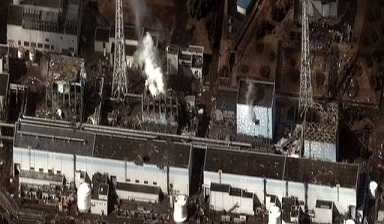Dear Dr. Zoomie – I heard that radiation levels have gone sky-high at Fukushima. What gives? Do we need to worry that it’s still melting down or giving worse? Should I avoid the Pacific Ocean and the West Coast? Help!
Yeah…this was pretty interesting. And of course the question is why the radiation levels went up and what that means. But first, let’s talk a little bit about the radiation level that the story talks about.
No way around the fact that 530 Sieverts per hour (Sv/hr) is a whopping radiation dose rate. A dose rate of 10 Sv (1000 rem) is lethal 100% of the time, so this dose rate would give you a fatal dose of radiation in about a minute. So – yes – this is a serious dose rate. And let’s face it, if even a robot can only handle it for a few hours then we know it’s a high dose rate! For what it’s worth, I’ve been involved in radiation safety for 35 years and this is far and away the highest dose rate I’ve ever heard of. So there is no doubt that the dose rate reported is serious. The question we have to ask is whether this is a new dose rate (that is, did something change within the core to cause dose rates to go up) or was it like this all along and it was just found.

If this dose rate represents a change in core conditions then there might be cause for concern – it could indicate that something’s changed. For example, maybe some of the fuel dropped down to a new location. If it’s the latter then it could indicate that conditions might still be unstable. There are those who have speculated that perhaps the melted fuel has somehow achieved criticality again – this is highly unlikely. The reason is that it takes a great deal of engineering to achieve criticality in a nuclear reactor; the possibility that the melted fuel somehow rearranged itself to become critical is vanishingly unlikely.
It is possible that the components of the wrecked core have shifted and, in the rearrangement, a high-dose rate piece (or pieces) ended up near the instruments. This is more likely than a criticality, but given some other facts (I’ll get to these in a moment) this is also less likely than are other possibilities.
The key piece of information in this story was that TEPCO was pushing radiation instruments into a part of the plant that hadn’t been investigated before. As their instrument-bearing robot pushed into new territory it encountered new conditions – including parts of the ruined core. So it’s almost certain that the increased radiation levels are due to moving the instruments into new – and far more radioactive – territory. Think of moving your hand over a candle flame – as it passes over the flame you feel your hand heat up. This isn’t because someone just lit a candle – it’s because you moved your hand into the hot air above the candle that was already burning.
Interestingly, the robot took a number of photos as it was making its rounds, giving us an idea of what the core and reactor vessel now look like. Needless to say, it’s a mess – but that’s to be expected. There are lumps of what we can speculate are solidified fuel, a place that looks as though molten fuel melted its way through the floor grating, and so forth. It’s evident even to an untrained eye that there’s been a lot of damage – unfortunately, without knowing what the plant looked like before the accident (and being unfamiliar with this particular reactor plant design) it’s hard to know if anything non-obvious has changed.
The bottom line is that, while the newly reported radiation levels are dangerously high they probably don’t represent any changes in the conditions at the Fukushima reactors – much more likely is that they represent the first push into an area that has had extraordinarily high radiation levels every since the accident. So you don’t need to avoid the Pacific Ocean!